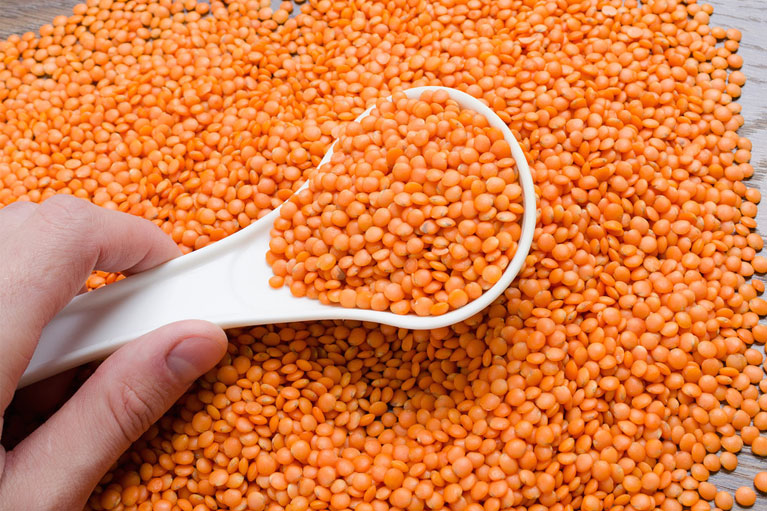
Description
The lentil (Binomial name is Lens culinaris) is a type of pulse. A variety of pulses or lentils exists with colors that range from yellow to red-orange to green, brown, and black. Red, white and yellow lentils in some cases are peeled, i.e., are those that have their skins removed before being sold. Lentils are sold in many forms, with or without the skins, whole or split. Culturally, other pulses are sometimes called lentils but are actually beans or peas, e.g. “black lentils” (urad beans).
Specifications
Lentils are used throughout Pakistan, India, the Mediterranean regions and the Middle East. They are frequently combined with rice, which has a similar cooking time. A lentil and rice dish is referred to in the Middle East as mujaddara or mejadra. Rice and lentils are also cooked together in khichdi, a popular Indian dish; a similar dish, kushari, is made in Egypt and considered one of two national dishes. Lentils are used to prepare an inexpensive and nutritious soup all over Europe and North and South America, sometimes combined with some form of chicken or pork. In rare cases the lentils are mixed with dairy cheese. Dried lentils can also be sprouted by leaving in water for several days. This changes the nutrition.
Lentils contain high levels of proteins, including the essential amino acids isoleucine and lysine, and are an essential source of inexpensive protein in many parts of the world for those who adhere to a vegetarian diet. Lentils are deficient in two essential amino acids, methionine and cystine. However, sprouted lentils contain sufficient levels of all essential amino acids, including methionine and cystine. Apart from a high level of proteins, lentils also contain dietary fiber, folate, vitamin B1, and minerals. Red (or pink) lentils contain a lower concentration of fiber than green lentils (11% rather than 31%). Health magazine has selected lentils as one of the five healthiest foods. Lentils are often mixed with grains, such as rice, which results in a complete protein dish.
Lentils are relatively tolerant to drought and are grown throughout the world. About a third of the worldwide production of lentils is from India, most of which is consumed in the domestic market. Canada is the largest export producer of lentils in the world and Saskatchewan is the most important producing region in Canada.
FAO reports that world production of lentils for calendar year 2008 is 3.874 million metric tonnes, primarily coming from Canada, India, Nepal and United States. National Agricultural Statistics Service (NASS) reports United States 2007 production at 154.5 thousand metric tonnes, primarily coming from North Dakota, Montana, Washington, and Idaho. Statistics Canada estimates that Canadian lentil production for the 2009/10 year is a record 1.5 million metric tonnes.

